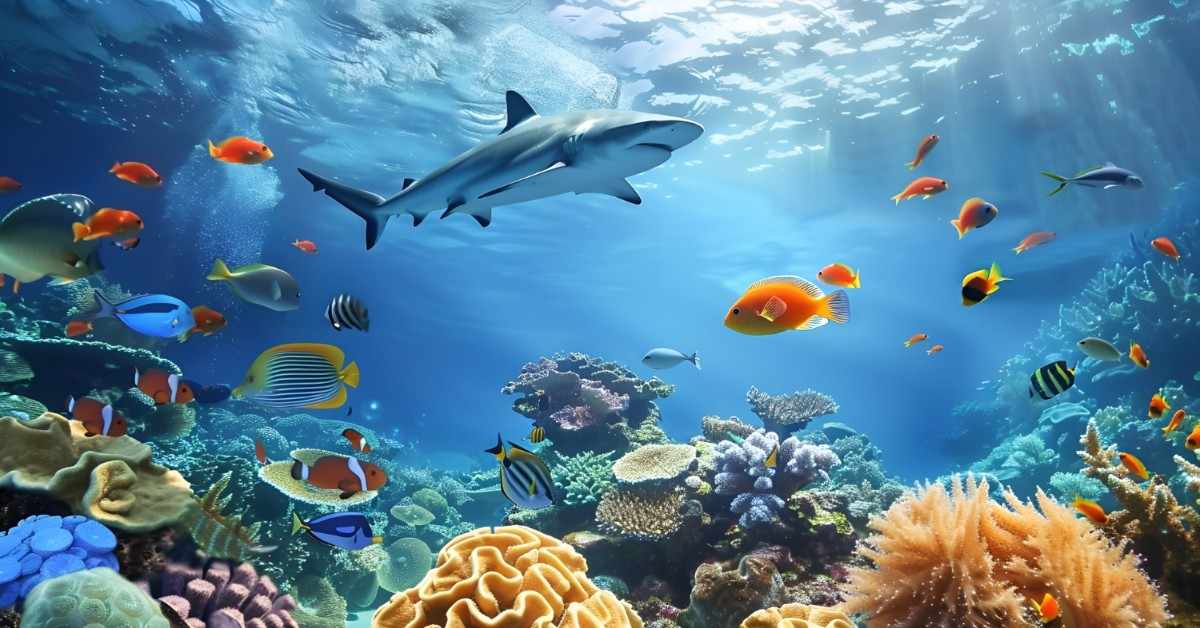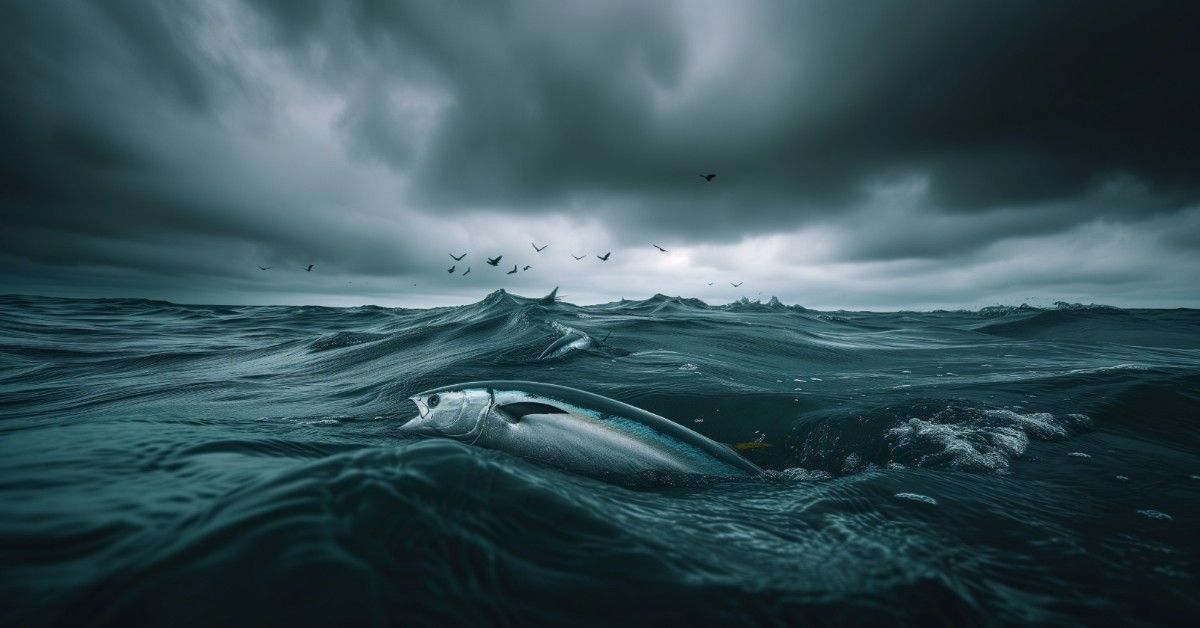So picture this—you’re floating miles above the ocean floor. Pitch black. Crushing pressure. And suddenly… something glows in the distance. Not a fish. Not a rock. Something unidentifiable. That’s the deep sea for you—Earth’s final frontier. And buddy, the discoveries down there? They’re weirder than a three-headed octopus playing ukulele.
I’ve covered ocean exploration for over a decade. Trust me—nothing prepares you for the jaw-drops lurking in those depths. Today? We’re diving into the wildest findings from that must-watch documentary (yeah, that viral YouTube deep dive). No fluff. Just mind-bending realities.
What Exactly Is the Deep Sea? (Hint: It’s Not Just “Deep Water”)
Let’s get literal. The “deep sea” starts where sunlight gives up—around 200 meters down. We’re talking:
Midnight zone (1,000–4,000m)
Abyssal zone (4,000–6,000m)
Hadal zone (6,000m+ trenches)
Pressure here? Up to 1,100 atmospheres. That’s like balancing 50 jumbo jets on your head. Temperature? Often near freezing. Yet—life thrives. How? Evolution got creative.
The Motherlode of Weird: 15 Deep Sea Finds That Defied Biology
The “Alien” Jellyfish (2016, Mariana Trench)
What it is: A tentacled glow-stick on steroids. No mouth. No stomach. Just… bioluminescent tendrils pulsing near toxic vents.
Reaction: NOAA’s Dr. Samantha Joye gasped live: “This isn’t just new—it’s a blueprint for life we’ve never imagined.”
Why it rewrote science: Proved life could thrive on chemical synthesis alone—no sun or organic food needed. Redefined the hunt for extraterrestrial life.
The “Ghost Fleet” Graveyard (2021, Philippine Trench)
What it is: 23 WWII warships at 6,200m, draped in blood-red coral that glows in the dark.
Stats: Coral devoured steel hulls 10x faster than metal-eating bacteria.
Future implication: Bio-engineered pollution cleanup—using deep-sea organisms to digest ocean plastics.
The Coelacanth: “Living Fossil” Nursery (1938/2000s, Indian Ocean Vents)
What it is: A “dinosaur fish” declared extinct for 66 million years—caught on camera nursing juveniles near hydrothermal vents.
Kicker: DNA showed zero evolution in 400 million years.
Quote: Dr. Alan Jamieson: “Finding them breeding is like spotting a T-Rex running a daycare.”
Giant Sea Spiders (2022, Antarctic Abyss)
What it is: Dinner-plate-sized spiders with 50cm legs—using their gut to pump blood because hearts failed evolution.
Science shock: Defied “inverse gigantism” rules—proving extreme cold expands life forms, not shrinks them.
The “Eternal Jellyfish” (Mediterranean & Japan Trench)
What it is: Turritopsis dohrnii—reverts to a baby polyp when injured or starving. Biologically immortal.
Medical revolution: Its cell-regeneration genes are now trial targets for Alzheimer’s and cancer therapies.
Vampire Squid from Hell (2000s, Global Midnight Zone)
What it is: A 300-million-year-old relic. Inverts its spiked cape into a bioluminescent “net” to trap prey.
Quote: Dr. Michael Vecchione: “It’s not a squid or octopus—it’s evolution’s abandoned experiment.”
Zombie Bone Worms (2002, Monterey Whale Fall)
What it is: Mouthless, gutless worms (Osedax) that dissolve bones using acid-secreting bacteria.
Impact: Solved the mystery of “vanishing” whale carcasses—and revealed a carbon-sequestration system we never knew existed.
Singing Hydrothermal Vents (2010, East Pacific Rise)
What it is: Superheated mineral chimneys emitting low-frequency songs via seismic vibrations.
Science twist: Sound patterns predict volcanic eruptions—giving us a natural deep-sea early-warning system.
Crawling Comb Jellies (2016, Arctic Abyss)
What it is: Gelatinous blobs using sticky tentacles to crawl along the seafloor like spiders.
Why it matters: Their locomotion rewrote theories about how early animals moved before evolving limbs.
Giant Tubeworms (1977, Galápagos Rift Vents)
What it is: 3m-tall worms with blood-red plumes—no mouth or gut. Survive purely on chemicals processed by symbiotic bacteria.
Legacy: First proof that life doesn’t need photosynthesis—inspiring NASA’s Europa missions.
Headless Chicken Monster (2018, Gulf of Mexico)
What it is: A swimming sea cucumber (Enypniastes) with webbed “wings” and see-through skin glowing blue.
Absurd genius: Its frantic flopping mimics a dying jellyfish—luring predators away from its young.
Barreleye Fish (2004, Monterey Canyon)
What it is: A fish with a transparent head filled with fluid. Tubular eyes rotate upward like night-vision goggles.
Discovery: Filmed alive after 65 years of dead specimens—revealing its bizarre upward gaze to spot prey silhouettes.
Deepstaria’s Living Blanket (1966, Pacific/Atlantic Abyss)
What it is: A jellyfish with no tentacles—its entire 1m-wide body pulses like a glowing ghost sheet to trap prey.
Mystery: Rarely seen intact. Its delicate body disintegrates if touched—even by submersibles.
Hadal Snailfish (2014, Mariana Trench)
What it is: Earth’s deepest fish (8,000m+). Gelatinous body resists crushing pressure; skeleton is soft as cartilage.
Genetic marvel: Evolved anti-protein-crushing enzymes—now studied for preserving transplant organs.
Mimic Octopus (1998/2020s, Sulawesi & Trenches)
What it is: Shallow-water trickster with deep-sea cousins. Shifts skin to mimic venomous sea snakes, lionfish, and jellyfish.
Neurological wonder: Its real-time “costume changes” revealed unknown complexities in invertebrate brains.

The Real Mind-Blow? This Changes Everything We Knew About Life Itself
Let’s be honest—before these finds, marine biology felt… settled. Sunlight fueled food chains. Evolution moved in one direction. Life needed “Goldilocks” conditions. Then came the vents. The jellyfish without stomachs. The bone-dissolving worms. Suddenly, we’re staring at ecosystems thriving on toxic chemicals, in crushing darkness, using biological tricks straight out of sci-fi. That “alien” jellyfish?
It’s not just a curiosity. It’s proof that life can run on inorganic energy—hydrogen sulfide, methane, even heavy metals. Think about that. We’ve been scanning distant ocean moons like Europa for liquid water, but what if life there looks less like Earth’s fish and more like a glowing deep-sea spaghetti monster? These abyssal creatures aren’t just oddballs.
They’re templates for reimagining biology on other worlds—and rewriting the rules for how life begins, survives, and evolves right here. Suddenly, textbooks feel outdated. Labs are scrambling. And the question isn’t “Is there life elsewhere?”—it’s “How many kinds of life exist that we haven’t dreamed of yet?”
Why This Isn’t Just Science—It’s Our Survival Toolkit
But here’s where it gets personal. That blood-red coral devouring WWII battleships? Scientists are already reverse-engineering its enzymes to eat plastic waste. The “eternal jellyfish” and its age-reversing cells? They’re the blueprint for breakthrough Alzheimer’s treatments targeting cellular decay. Even the zombie worms—dissolving bones with bacterial acid—are inspiring carbon-capture tech that could trap emissions in solid rock. And let’s not forget the hadal snailfish: its gelatinous, pressure-proof body holds secrets to preserving transplant organs longer.
Every dive into the abyss isn’t just about discovery—it’s a race for solutions. Climate change. Pandemics. Pollution. Energy scarcity. These creatures evolved fixes for extremes we’re only now facing. Yet here’s the gut punch: we’re destroying these ecosystems before we fully understand them. Deep-sea mining drills rip through vents where immortal jellies pulse. Trawlers shred ancient nurseries.
If we lose these species, we’re not just losing weird wonders—we’re burning the library of life’s most radical survival hacks. Protecting the deep isn’t altruism. It’s an investment in humanity’s next chapter.
Timeline: How Deep Sea Tech Unlocked the Impossible
1875: HMS Challenger drags up “primordial slime” (turned out to be giant amoebas)
1960: Trieste reaches Mariana Trench. Finds… flatfish? (Debated for decades)
2012: Deepsea Challenger proves life exists in trenches. Game over.
2020–2024: AI subs + DNA “sniffers” catalog 1,500+ new species. Including the infamous “eternal jellyfish” (reverses its own aging). No—really.

Why Should You Care? (Beyond “Cool Factor”)
That “bizarre” deep-sea bacteria eating shipwrecks? It’s now munching plastic in labs. Those thermal vents? They’re blueprints for carbon-free energy. And that jellyfish with no stomach? It’s inspiring cancer research—because its cells don’t degenerate.
But here’s the kicker: we’ve mapped Mars better than our own ocean floor. Only 24% is charted. Meaning? Tomorrow’s headline could be anything. A cure? A monster? A second genesis of life?
FAQs: What Real People Ask About the Deep Sea
Could there be dinosaurs in the deep sea?
Technically? No T-Rexs. But yes to “living fossils” unchanged for millions of years.What’s the creepiest thing ever found down there?
The “blob sculpins” that nurse their eggs like mammals. Or maybe the “zombie worms” that dissolve whale bones.How do creatures survive such insane pressure?
No air spaces. Gelatinous bodies. Anti-crush proteins. Evolution’s a genius.Have we found Atlantis?
Nope. But we did find “Yonaguni Monument”—a 12,000-year-old pyramid-esque structure off Japan. Natural or man-made? Still fighting.Could deep-sea exploration trigger disasters?
Unlikely. But disturbing methane deposits? That’s a legit concern.What’s the single biggest discovery?
Hydrothermal vent ecosystems—proving life doesn’t need the sun.How cold is the deep sea?
Between 0–4°C (32–39°F). Yet thermal vents hit 400°C (750°F).Are there deep-sea “monsters”?
Define monster. The 12m giant squid? Real. Leviathan? Myth.Can humans ever live down there?
Short-term? Yes (research bases). Long-term? Your bones would dissolve.What happens to a human body at 6,000m?
Crushed instantly. It’s… messy.
The Next Frontier: What’s Coming (2025–2030)
DNA “Hunting” Drones: Scan water for unknown species’ genetic traces.
Neural-Link Manned Subs: Pilots “feel” robotic arms like their own limbs.
Deep-Sea Mining: Controversial. Vital for EV batteries. Can we do it ethically?
Final Thought? We’ve Barely Scratched the Surface
That video we dissected? It’s a love letter to human curiosity. Every dive shatters assumptions. Every sample rewrites textbooks. And that pressure-cooked, lightless void? It’s teeming with answers to famine, disease, climate change…
Feels like we’re not just exploring the ocean. We’re exploring ourselves.
Want to geek out over more insane discoveries?
👉 Dive deeper with me at Gemscor’s Exploration Hub —where science meets the surreal.














